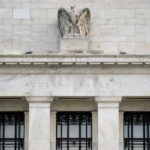
(WASHINGTON) — Policymakers and investors will closely watch a decision from the Federal Reserve on Wednesday about whether to raise interest rates as the U.S. economy weathers two pressing challenges: a banking crisis and persistent inflation.
The precarious moment poses a dilemma for the Fed because its strongest tool, the benchmark interest rate, is a key cause of the financial emergency but the primary solution for high prices.
The central bank has aggressively raised interest rates over the past year, bringing inflation down significantly from a summer peak, though it remains more than triple the Fed’s target of 2%.
The rapid rise in interest rates, however, tanked the value of bonds held by Silicon Valley Bank, precipitating its failure and cascading damage for the financial sector.
Nearly 190 banks are at risk of collapse amid high interest rates and declining asset values, according to a study released by a team of university researchers earlier this month.
A continuation of rate hikes risks further intensifying the banking crisis, putting additional financial institutions at risk of collapse. However, a pause on rate increases could undermine the Federal Reserve’s fight against inflation, allowing high prices to persist and eat away at household budgets, economists previously told ABC News.
A survey by Bloomberg last week found that most economists expect the Fed to raise interest rates by 0.25% on Wednesday, matching the increase that the central bank imposed at its most recent meeting last month.
In recent days, some forecasters have predicted the Fed will forego an interest rate hike as it monitors the continuing fallout from the Silicon Valley Bank failure.
Goldman Sachs, for instance, told investors on Monday that it expects the Fed “to pause at its March meeting this week because of stress in the banking system.”
Over the last year, the Federal Reserve raised its benchmark interest rate by 4.5%, the fastest pace since the 1980s.
The Fed has put forward a string of borrowing cost increases as it tries to slash price hikes by slowing the economy and choking off demand. The approach, however, risks tipping the U.S. economy into a recession and putting millions out of work.
Persistent rate hikes also threaten the stability of the banking system.
Still, the Fed could avoid facing a choice between slowing price increases and preserving financial stability, since tighter lending practices taken up by private sector banks in response to the financial distress may cool the economy on its own accord, allowing the Fed to forego raising rates while still bringing down inflation.
“No matter what the Fed does later this month, financial conditions are tightening,” Julia Pollak, chief economist at Zip Recruiter, said last week.
Copyright © 2023, ABC Audio. All rights reserved.
